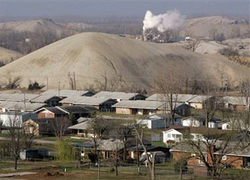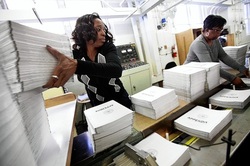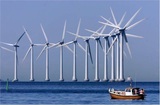
At first I thought it was a political ploy. President Obama proposed cutting $2.6 billion from the Low Income Home Energy Assistance program (LIHEAP), a 50% reduction in funding from last year. Did he think that proposing cuts for poor people would enhance his approval rating among Americans intent on cutting government benefits for others?
Then I got the facts. This was not really much of a cut at all. You see, the budget for this program had been doubled in 2008 in response to oil prices that doubled between June 2007 and June 2008, hitting an all-time record high price of almost $148 per barrel in July 2008. When President Obama unveiled his budget proposal earlier this month, oil prices had stayed under $90 per barrel and natural gas prices had also remained fairly steady for all of 2010. Under those circumstances, President Obama merely proposed to restore the Low Income Home Energy Assistance program to its pre-2008 oil crisis funding levels.
The assumptions underlying President Obama's proposed funding for this program may turn out to be inaccurate given ongoing events in the Middle East. Since the historically high oil prices in July 2008, however, Saudi Arabia has intervened several times to keep the price of oil at or below $100 per barrel. The Saudis have recently pledged to make up any shortfall caused by the current unrest in Libya. They understand that prices significantly above $100 per barrel would jeopardize the global economic recovery. Sustained prices at those levels would also result in reductions in oil consumption as efficiency, conservation, and alternative energy sources became more attractive.
Will the Saudis succeed in managing the price of oil? Unlikely in the long term because growing demand and the absence of significant new supplies will continue to put upward pressure on prices. But in the short term, it is reasonable to assume that the Saudis will be able to prevent the types of price spikes we saw in 2008. President Obama's proposed budget allocation for LIHEAP should be sufficient to prevent people from freezing.
What if events in the Middle East spiral out of control and oil prices skyrocket? The President and Congress will have to revisit the issue and do what they did in 2008 -- provide additional funding for the Low Income Home Energy Assistance program in response to an emergency. But given the state of our economy and its dependence on oil, that would be only one of many serious challenges.
John Howley
Orlando, Florida
Then I got the facts. This was not really much of a cut at all. You see, the budget for this program had been doubled in 2008 in response to oil prices that doubled between June 2007 and June 2008, hitting an all-time record high price of almost $148 per barrel in July 2008. When President Obama unveiled his budget proposal earlier this month, oil prices had stayed under $90 per barrel and natural gas prices had also remained fairly steady for all of 2010. Under those circumstances, President Obama merely proposed to restore the Low Income Home Energy Assistance program to its pre-2008 oil crisis funding levels.
The assumptions underlying President Obama's proposed funding for this program may turn out to be inaccurate given ongoing events in the Middle East. Since the historically high oil prices in July 2008, however, Saudi Arabia has intervened several times to keep the price of oil at or below $100 per barrel. The Saudis have recently pledged to make up any shortfall caused by the current unrest in Libya. They understand that prices significantly above $100 per barrel would jeopardize the global economic recovery. Sustained prices at those levels would also result in reductions in oil consumption as efficiency, conservation, and alternative energy sources became more attractive.
Will the Saudis succeed in managing the price of oil? Unlikely in the long term because growing demand and the absence of significant new supplies will continue to put upward pressure on prices. But in the short term, it is reasonable to assume that the Saudis will be able to prevent the types of price spikes we saw in 2008. President Obama's proposed budget allocation for LIHEAP should be sufficient to prevent people from freezing.
What if events in the Middle East spiral out of control and oil prices skyrocket? The President and Congress will have to revisit the issue and do what they did in 2008 -- provide additional funding for the Low Income Home Energy Assistance program in response to an emergency. But given the state of our economy and its dependence on oil, that would be only one of many serious challenges.
John Howley
Orlando, Florida



 RSS Feed
RSS Feed